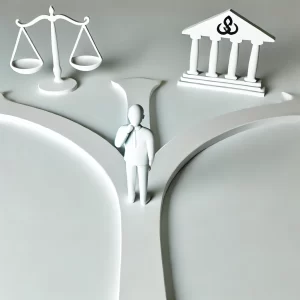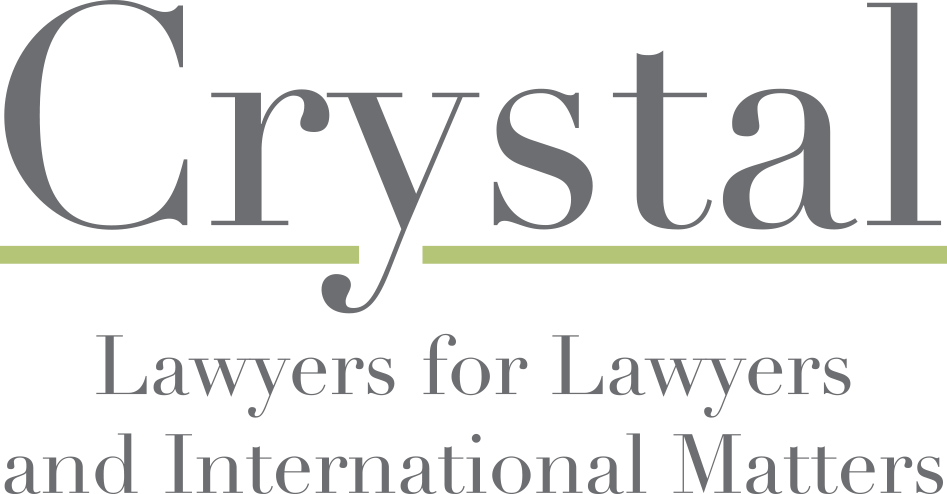
How should a lawyer approach decision-making when the Rules of Professional Conduct provide discretion or in situations involving grey areas?My paper Deciding Difficult Questions of Professional Ethics: A Model of Nuanced Decision-Making discusses the benefits for lawyers to use a nuanced approach to ethical decision-making – embracing a multi-dimensional analysis – instead of a binary, “yes/no” framework.
In his book on professional responsibility and in previous articles, Professor Crystal advocated for adopting a “philosophy of lawyering” to help guide lawyers through the challenging ethical decisions they face in practice. He outlined four distinct philosophies: client-centered, moral, institutional, and defensive lawyering, the latter being a subset of self-interest.
In this article, he argues that rather than rigidly adhering to a single philosophy, it is better for lawyers to adopt a nuanced approach, assessing situations from multiple perspectives—client-centered, moral, institutional, and defensive—to reach decisions that more thoroughly address the ethical complexities they encounter in practice.
Key Aspects of Nuanced Decision-Making
- Multi-Perspective Evaluation: The nuanced approach requires the lawyer to consider the implications of an action not only for the client but also for other stakeholders, including the judiciary, opposing counsel, and the legal profession as a whole. For example, in a case where a lawyer’s client has provided false testimony, a polar approach might focus strictly on whether disclosure is necessary under a single ethical rule. However, the nuanced approach would consider how disclosure impacts:
- The client’s interests, especially confidentiality and trust.
- Institutional integrity, such as the honesty of the judicial process.
- The lawyer’s reputation and risk exposure, considering professional consequences.
- Philosophical Integration: In this model, the lawyer does not strictly adhere to one philosophy of lawyering (e.g., client-centered or institutional) but assesses each philosophy in relation to the issue. By integrating multiple philosophies, the lawyer can recognize the merits and limitations of each, ultimately selecting an action that best aligns with the various ethical demands of the case.
- Weighing Conflicting Values: The nuanced approach allows a lawyer to balance competing ethical values, such as honesty and confidentiality, rather than forcing a decision based on the rigid prioritization of one value over another. For instance, if maintaining client trust conflicts with ensuring the truthfulness of testimony, the lawyer would weigh the importance of each, reflecting on how the values interact in that specific context.
- Guided Discretion: While polar decision-making leads to clear-cut decisions, the nuanced model affords the lawyer discretion to choose an action that fits the context. This discretion is, however, not arbitrary—it is informed by ethical rules and philosophies, allowing flexibility in applying them. The lawyer is encouraged to employ “practical reasoning” to identify various paths forward and determine how each aligns with different ethical commitments.
Application of the Nuanced Approach
In practice, the nuanced approach unfolds through several steps:
- Identifying Options: The lawyer begins by mapping out all possible responses to the ethical issue. This may involve consulting the client or an ethics advisor to ensure a comprehensive view of the available courses of action.
- Evaluating Philosophies in Context: Each option is then analyzed through the lens of the four philosophies:
- Client-Centered: How does each option serve the client’s best interests, including confidentiality and outcome?
- Moral: What is the morally appropriate action that upholds values like honesty, integrity, and respect for relationships?
- Institutional: How does each option protect or harm the integrity of the legal process or broader institution of law?
- Defensive: What are the professional risks or protections associated with each choice?
- Weighing and Prioritizing: After considering the issue from these perspectives, the lawyer may identify a preferred course of action. If no clear decision emerges, the lawyer is encouraged to prioritize the philosophy most central to the matter.
Hypothetical Example: Disclosure Dilemma in Testimony
In the hypothetical situation presented in the paper, a client has provided false testimony in a deposition, unknowingly introducing a potential ethical conflict for the lawyer.
In this hypothetical, you represent Paul, who is suing a tire manufacturer for injuries he sustained when a bus tire exploded near him. Paul’s wife is also part of the lawsuit, seeking damages for loss of consortium. During Paul’s deposition, the defense attorney asked if he had any marital issues or an affair within the past five years. Paul denied having an affair. Later, however, Paul confides to you that he did, in fact, have a brief affair two years prior, unknown to his wife, and he is now troubled by his false testimony.
This situation raises an ethical dilemma about how to proceed, balancing Paul’s confidentiality, his duty to be truthful, and the potential impact of disclosure on both his legal case and marriage.
The nuanced model would guide the lawyer to approach this dilemma as follows:
- Client-Centered: The lawyer would consider how disclosure might affect the client’s case and personal relationships, including the impact on client confidentiality and trust.
- Moral: The lawyer reflects on personal principles—perhaps against condoning falsehoods—while also acknowledging that disclosing the affair may harm the client’s marriage, potentially conflicting with the lawyer’s moral commitment to client welfare.
- Institutional: This philosophy emphasizes the importance of honesty in legal proceedings. Although the testimony was false, the materiality is questionable, so the lawyer might weigh whether disclosure is genuinely necessary to protect the proceeding’s integrity.
- Defensive: Here, the lawyer considers the risks of nondisclosure, such as potential malpractice claims or disciplinary action if the falsehood is uncovered later, especially if it undermines the client’s case.
In the end, a nuanced analysis might slightly favor disclosure because of the institutional and defensive philosophies, while the moral philosophy would argue against it to avoid harm to the client’s personal life. Recognizing these tensions, the lawyer might seek a remedial action that minimizes harm, such as advising the client to correct the record informally if materiality is established.
Practical Benefits of Nuanced Decision-Making
This approach offers a balanced framework that accommodates the dynamic nature of legal ethics:
- Flexibility and Adaptability: By considering a range of factors, the nuanced approach allows the lawyer to make tailored decisions that adapt to unique circumstances.
- Reduction of Ethical Conflicts: Integrating multiple ethical philosophies reduces the polarizing nature of strict adherence to one approach, minimizing internal conflicts and promoting a more holistic understanding of the lawyer’s role.
- Enhanced Professional Integrity: By prioritizing both client interests and institutional values, the lawyer strengthens the ethical foundation of their practice, ultimately reinforcing trust in the profession.
In conclusion, the nuanced approach is superior to a single-philosophy approach when navigating the complex ethical landscape lawyers face, as it fosters decisions that respect a spectrum of obligations and uphold the multifaceted role of lawyers.
Nathan M. Crystal, Deciding Difficult Questions of Professional Ethics: A Model of Nuanced Decision-Making, 85 Pitt. L. Rev. 635 (2024)
For information, Nathan M. Crystal
